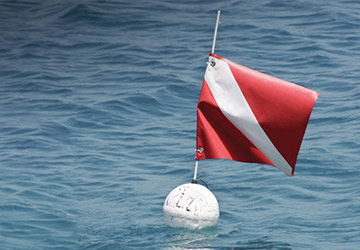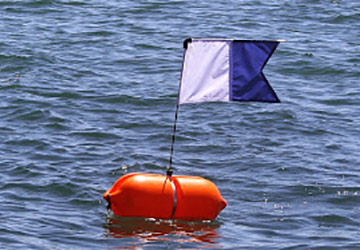Inexperience and negligence are contributing factors to propeller and vessel strikes on divers and swimmers. Adherence to Federal and state boating laws here in the U.S. certainly helps but regulations vary by location and do not apply elsewhere in world.
The fact is, regardless of your location, the key to preventing injuries and death by propeller and vessel strikes is simple: boaters, divers, and swimmers must be proactively aware of one another at all times.
Bonus Tip: Be prepared. Depending on your location, a 911 call via cell phone may not be an option so knowing who to contact for emergency medical evacuation and having multiple forms of reliable communication with which to reach them, is critical. Also keep in mind that if it took you several hours (or days) to get to your current location, it could take emergency personnel the same amount of time to reach you. So make sure you have well-equipped first aid kits and oxygen units aboard and that you know how to use them.
Smart Protection for Boating Families
Be prepared with a DAN Boater Family Membership. Worldwide coverage only US$100. 24/7 Hotline, Medical Info Line, Emergency Medical Evacuation and Repatriation & more.
JOIN NOW
Bonus Tip: Have an emergency action plan in place. Prior to arriving at a dive site or anchoring point, make a plan for how you will respond to and evacuate someone who was injured by a boat or propeller. If you’re traveling on someone else’s boat, find out if the owner/operator already has a plan in place and, if so, get the details.

Share the infographic on your site
When on the water, be sure to use these universally recognized flags and buoys appropriately. Flags should be stiff, unfurled and in recognizable condition.

This flag explicitly signals that divers are in the water and should always be flown from a boat or buoy when divers are in the water. When flown from a boat, the diver down flag should be at least 20 inches by 24 inches in size and flown above the boat’s highest point. When displayed from a buoy, the flag should be at least 12 inches by 12 inches in size.

Internationally recognized, this flag is flown when the mobility of a boat is restricted, indicating that other vessels should yield the right of way. The alpha flag may be flown along with the diver down flag when divers are in the water.

When deployed during ascent, a surface marker buoy helps make a diver’s presence more visible. In addition to the buoy, divers should also use a whistle or other audible signal and a dive light or signaling mirror to notify boaters of their location in the water.
MORE FROM
SAFE PASSAGE

BOATING SAFETY | Dec 1, 2018
Cold Water Boating? It's Safer When You Do It Smarter

BOATING SAFETY | Aug 7, 2018
Everything You Need to Pack the Perfect Ditch Bag